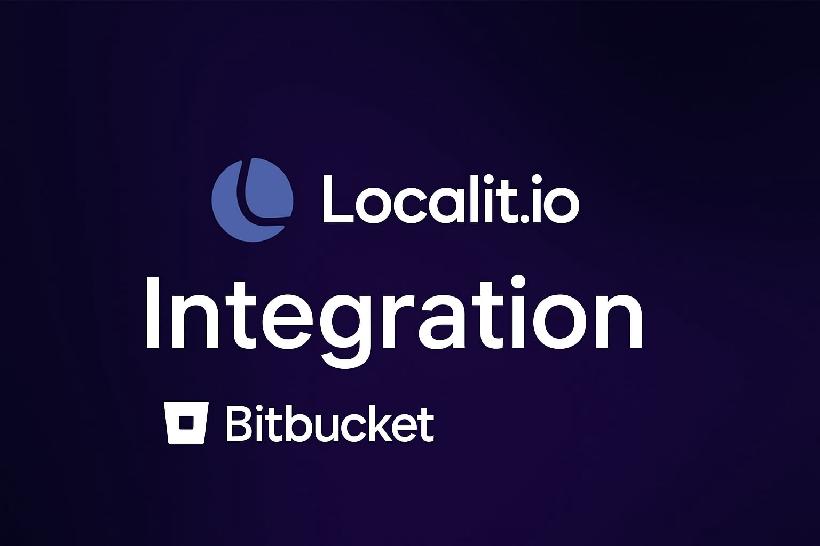If you want to make it big in the world of business, you will inevitably start looking to new markets and opportunities at some point. We can all agree that global expansion means more customers, clients, and revenues. Nothing wrong with that if you ask me! But here's a problem that sticks out like a sore thumb: the language barrier. If you are an English-speaking company, it might be extra hard to get the attention in regions of the world that are not well versed in it. What do you do then?
Translation and localization (especially the latter) is your answer. Local markets respond well to localized content that feels natural. Localization drives global growth and builds brand loyalty. Want to learn more? Read on to discover how you can make your global market expansion a huge success through localization efforts.
What Is Localization?
Localization is much more than just clicking the button to switch languages on a website. It is about adapting content rather than just translating it, making it applicable to foreign markets and natural. Another important part is to factor in cultural nuances. Do bright colors work for banners in Japan? Does Scandinavia prefer witty slogans? What are marketing limitations in the Middle East? The answers to these questions will form the basis of your successful localization strategy.
What can be localized? Practically everything. Here are a few suggestions (they can also be used as a checklist!):
Content and Text
UI/UX Text: Buttons, menus, tooltips, error messages.
Product Descriptions: Listings, details, specifications.
Legal Information: Terms of service, privacy policies, disclaimers.
Help and Support: FAQs, guides, chatbots.
Marketing Content: Banners, slogans, CTAs, blog posts.
Visual Elements
Images and Graphics: Culturally relevant visuals and localized screenshots.
Icons and Symbols: Adjust for cultural significance and understanding.
Date, Time, and Calendar Formats: Adapt for local conventions (like December 25 vs. 25 December in the US vs. the rest of the world).
Currency and Numbers: Formats, symbols, separators (commas vs. periods).
Functional Aspects
Payment Gateways: Support for local payment methods.
Shipping Options: Display region-specific carriers and costs.
Search Functionality: Adapt keywords and algorithms for local languages and dialects.
Input Forms: Address formats, phone numbers, postal codes.
Cultural and Regional Adaptations
Language Variants: Different dialects or regional language preferences (UK vs. US English, Castilian vs. LatAm Spanish).
Color Preferences: Adapt colors to avoid negative cultural associations.
Measurements and Units: Convert between metric and imperial systems.
Content Sensitivity: Avoid symbols, phrases, or concepts that might offend.
Technical Components
SEO Optimization: Localized keywords, meta tags, URLs.
Accessibility Features: Screen readers and other assistive technologies in local languages.
App Store Localization: Titles, descriptions, preview images/videos for regional app stores.
A well-crafted localization strategy will need to make sure all of these and many more are looked at and cared for. Otherwise, you run the risk of receiving negative reviews and overloading your customer support.
Benefits of Localization for Global Expansion
There is plenty of research into how effective localization can help you win over the global audience. Here's a quick rundown with links:
Companies that use localization are 1.5x times more likely to see an increase in total revenues.
Localized mobile apps get 128% more downloads and earn 26% more from in-app purchases.
76% of people prefer to buy products with info in their own language, and 40% won’t buy if it’s in another language, even if they understand it.
Localizing for China, the U.S., Japan, and Germany gives companies access to almost 50% of the world’s online sales.
E-commerce businesses that localize their websites see 70% more traffic and better conversion rates.
But not everything can have a numeric value attached to it. Certain benefits extend beyond the realm of statistics and year-end reports but are, perhaps, even more important in the long run.
1. Build Trust in Target Markets
Trust is key to success when entering new markets. Customers are more likely to buy from a brand they feel understands and respects them. Localization helps build trust by:
Respecting local culture and traditions, which shows customers that their values matter.
Making customers feel comfortable with familiar content, creating a sense of connection.
Showing your brand cares about meeting their needs by tailoring products and services to suit them.
For example, a skincare brand selling in Asia might focus its marketing on local beauty standards and preferences, such as promoting fairer, clearer skin or using traditional ingredients. This makes the brand feel more relatable and trustworthy and increases the chance of success in the region.
2. Boost Positive Impressions
A careful localization process can help you get noticed by your target audience and raise the possibility of your marketing campaigns achieving their goals. Well-localized marketing materials for your products or services based on extensive market research will perform their primary function: get the attention that businesses crave for. This will, in turn, generate positive impressions (provided the quality meets expectations) in the form of:
More favorable reviews online
More social media followers and subscribers
A more active audience that likes, comments, and shares your posts online
More buzz and more recommendations to friends and family members
More attention by local influencers and bloggers who will then act as your ambassadors if you can sign deals with them
More media and online attention
3. Stay Ahead of Competitors
Competition is fierce in the global marketplace. A robust localization strategy can differentiate you from others who only rely on basic translation or even prefer to steer clear of localization altogether. By understanding and catering to local needs, you position your brand as a preferred choice.
Crafting a Winning Localization Strategy
The international market is no joke, only the strongest survive. To grab your deserved market share of new and unexplored lands you'll need a logical and straightforward approach to content localization, website localization, and marketing localization. Let's break down this process into manageable steps that will guarantee your global success (another checklist incoming!).
Step 1: Market Research and Planning
Before diving into localization for different markets, take the time to:
Analyze Target Markets: Identify regions with the highest potential for growth. Look at factors like purchasing power, demand for your product, and competition.
Ask Relevant Questions: What is your business planning to achieve exactly? These can help you:
What are your goals for entering this new market?
Is your product right for this audience?
Do you have enough resources to support this expansion?
Who are your customers in this market?
What does your competition look like?
What messages will connect with your audience culturally?
Should you adjust your pricing for the local market?
What process will you follow? How will it fit with other tasks like creating content, designing, marketing, and product development?
How will you track progress and measure success?
Which team will manage and lead the localization strategy?
What tools or technology will you use?
Understand Local Culture: Pay attention to cultural norms, holidays, and preferences that will be crucial in winning over specific markets.
Define Clear Goals: Decide what you want to achieve through localization. Is it boosting brand awareness or driving sales? Building long-term relationships? It can be a mix of all three and more too.
Step 2: Content Localization
Localization involves much more than just running your content through a machine translator and calling it a day. Your localization team needs to roll up their sleeves and get it right, you might only get one chance. Localization requires:
Professional Expertise: Who knows what marketing strategies resonate with local audiences better than locals? Work with native speakers or partner with specialized agencies to ensure your efforts won't miss the mark.
Localization Software: You can choose to localize manually but why waste time and resources? Use cutting-edge tech advances and pick a Translation Management System (TMS). If you are a smaller to medium-size company, a software developer, or a professional translator, Localit is your perfect choice. With its flexible pricing, AI-driven translation services, and quick processing speed, your localization will be done in no time. The service offers expertise, advanced tools, and a streamlined process to ensure your content is effectively adapted for each market without compromising quality. Check it out here and claim your free plan today.
Visual Optimization: Put your designers to work. Make sure images, colors, and layouts are adapted to suit local tastes and preferences. For instance, the Western world prefers simpler designs, while Asia is more into bright colors, big letters, and busy visuals.
Localized UX Design: This is a crucial step to reduce bounce rates. Tailor navigation, payment methods (!!!), and similar features that will ensure that customers won't exit your site too early.
Step 3: Localization Testing and Iteration
Once localized, test your content rigorously:
Focus Groups: Local feedback from your target audience is essential when dealing with localization, especially if you don't have a foothold in a particular market yet.
A/B Testing: Create different versions of your localized content and compare what works better.
Ongoing Updates: Localization isn't a once-off deal (fortunately or unfortunately). Continuously refine your content to reflect changing trends and user feedback.
How to Measure the Success of Localization Efforts
Ensuring your localization strategy hits the mark is an important part of this international expansion journey. Here is, you guessed it, another checklist for your business to track your performance
Engagement Rates: Track how users in different regions interact with your content. Are they clicking, sharing, or spending more time on your site? Increased engagement often signals that your localized content resonates well.
Conversion Rates: Compare sales data before and after localization. Seeing a positive difference? Celebrate but remember to keep going!
Customer Feedback: Collect reviews, surveys, and social media impressions from local users. Positive feedback indicates your message is hitting home, while constructive criticism can guide further improvements.
Search Engine Rankings: Track how your content, website, and products behave in the local SEO world.
Customer Satisfaction Score (CSAT): There's no better way to tell how people feel about your brand than to ask them directly. Survey your local audiences often to see how happy they are. High satisfaction scores show your localization is working well and meeting their needs.
Return on Investment (ROI): Compare direct and indirect costs of your localization to the revenues it brings in.
Market Expansion: Successful Localization Is Possible
Localization isn’t just about switching words; it’s about bridging gaps. Expanding into new markets means connecting with people in ways that feel natural and relatable. The right approach to localization transforms your business into something familiar and trustworthy, no matter where in the world you’re aiming to grow. It’s not just text on a screen—it’s about crafting marketing messages, designs, and user experiences that truly resonate. Whether it’s tweaking a tagline for cultural relevance or offering local payment options, every detail counts. And honestly, having a reliable partner like Localit can make the entire process smoother and more efficient.
Success comes from understanding your audience and adapting to their world. Localization is how you make that leap. With the right tools and strategy, your business can reach new heights. It’s not about being perfect; it’s about being authentic. People respond to effort, especially when it’s clear you’ve made one to connect on their terms. Don’t let language or cultural quirks hold you back. Start small, refine along the way, and let your brand find its place in the hearts of people everywhere.

 Bitbucket Integration: Complete Guide to Automated Localization Workflow
Bitbucket Integration: Complete Guide to Automated Localization Workflow ChatGPT-5 Now Available in Localit.io
ChatGPT-5 Now Available in Localit.io Everything You Need to Know about Mobile App Localization: Challenges + Best Practices of Working in a Different Language
Everything You Need to Know about Mobile App Localization: Challenges + Best Practices of Working in a Different Language